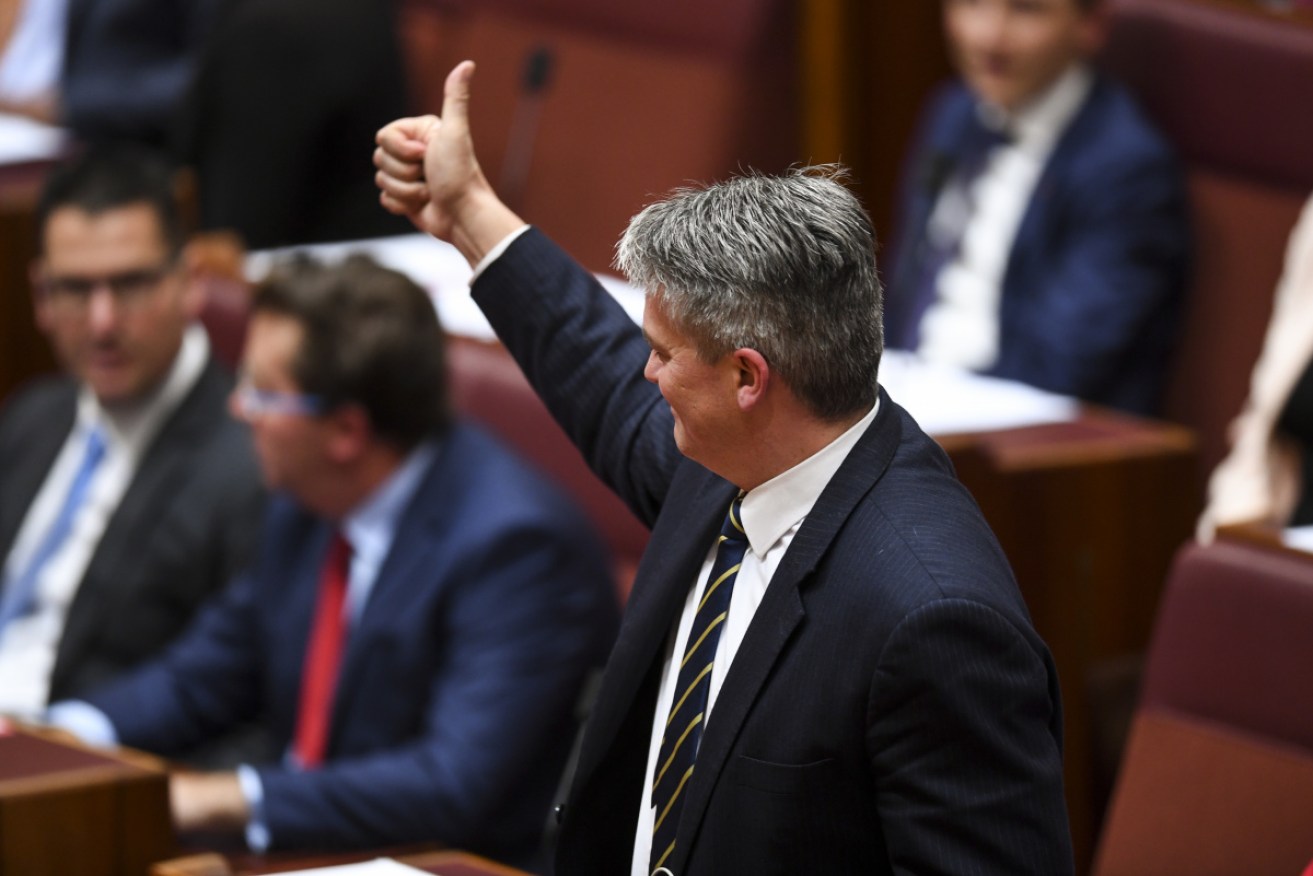The think tanks shaping Australia: The Australia Institute


Finance Minister Mathias Cormann during debate on the government's company tax legislation in the Senate. Photo: AAP
They have names we recognise only vaguely. But the papers, research and articles they continually produce have a profound affect on how Australia shapes its attitudes and policies.
Commonly referred to as ‘think tanks’, these organisations conduct their work in the background to some of the most momentous decisions made on our behalf.
In an effort to help us understand who is influencing our influencers, The New Daily has decided to shed some light on the workings, motivations and achievements of some of Australia’s most notable think tanks.
Set up in 1994 by then-Labor MP John Langmore and ethicist Professor Clive Hamilton, The Australia Institute (TAI) says it helped save Australians from a ticking “fiscal time bomb” in the form of the federal government’s proposed $65 billion dollar tax cut for big business.
Speaking to The New Daily less than a year after the proposed legislation was defeated in the Senate, Ebony Bennett, deputy director of TAI, explained how the progressive think tank was able to counter unprecedented support for the Coalition’s tax-relief plan for large companies.
Ms Bennett said TAI was instrumental in swaying support for the company tax cut, and schools, hospitals, aged care facilities and other services are poised to reap “tens of billions of dollars” as a result.
The whole of the business sector supported the company tax cuts, Ms Bennett said, from the Business Council of Australia to industry titans like the big banks, supermarkets and mining companies.
TAI has the stated aim of providing research to the nation’s decision makers and to “push public debate” on issues affecting all Australians.
The body’s research over many years ultimately revealed there was no demonstrated connection, either internationally or historically in Australia, between company tax cuts and economic prosperity, Ms Bennett said.
The big four banks would have saved $9.5 billion dollars in a decade, had the government proceeded with its proposal, most likely resulting in cuts to services and higher taxes on people, TAI found.
Also among TAI’s list of its biggest contributions to Australian policy was the expansion of the Pensions Loans Scheme.
Four years before Scott Morrison’s 2018 budget announcement to revamp the Pensions Loans Scheme, TAI released a paper explaining how expanding the scheme to include all pensioners would boost their incomes at almost no cost to the budget.
As of July this year, anyone of pensionable age will for the first time be able to annually borrow up to 150 per cent (revised from 100 per cent) of the full pension entitlement.
Lastly, Ms Bennett could not look past TAI’s instrumental role in helping unite the most unlikely pair to save multiple renewable energy bodies.
She said TAI played a key role in the coming together of United Australia Party leader Clive Palmer and former US vice-president Al Gore in 2014 to counter the Abbott government’s plan to abolish the Clean Energy Finance Corporation, Climate Change Authority and Renewable Energy Target.

Clive Palmer’s (R) decision to team up with Al Gore was labelled “surprising” and “courageous”. Photo: AAP
Ms Bennett said TAI research highlighted the benefits of maintaining the clean energy architecture, not only for jobs, but for investors as well as lowering power prices.
This helped convince the Senate crossbench to safeguard $23.4 billion worth of renewable energy investment from 2013 to 2018, she said.
Saving the Renewable Energy Target and Clean Energy Finance Corporation has reduced carbon emissions by at least 334 million tonnes, she said.
She said this represents more emissions reduction than the 92 million tonnes that the Abbott government-initiated Emissions Reduction Fund will likely produce over its six years of operation, from 2014 to 2020.
Who pays for the research?
TAI – a registered charity – does not identify funding sources, but gives a general overview of who it receives donations from.
“The Institute is independently funded by donations, as well as grants and commissioned research, from individuals and philanthropic trusts, business, unions and non-government organisations,” its website states.
TAI struggled financially in its first couple of years before receiving reported donations of almost $10 million from media mogul Rupert Murdoch’s extended family.
In 2016-17, TAI received 9152 donations from 2728 individual donors, including 1115 people who donated for the first time, according to its latest annual report.
This is part one of a five-part series on Australia’s most influential think tanks. Tomorrow, we look at the Institute of Public Affairs








